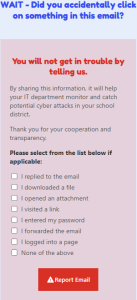When Dallas ISD police officer Omar Sepulveda decided to bring holiday cheer—and presents—to students with special needs at Dr. L.G. Pinkston Sr. High School, the school which he was serving in 2014, he asked the ROTC cadets at the school to help him organize the drive.
Sepulveda went a step further by incentivizing students to participate through a competition among five different classes to see which would raise the most donations. The winner, he said, would get a pizza party. It worked.
Students brought enough donations for the special education population but also for the children at Children’s Medical Center Dallas. Sepulveda and volunteer officers even shaved their heads in solidarity with the young cancer patients.
“I told the officers who were trying to join, ‘If guys are going to help me, we’re going to shave.’ That was basically my rule,” Sepulveda said. “The reason behind it was because when you go to the hospital, kids with cancer don’t have hair, so I didn’t want to walk in and have them look at me differently. I wanted us to be on the same level.”
That act of generosity marked the beginning of the Officer Claus Toy Drive. Teaming up with public safety officer Regina Black, who has been serving at Alex W. Spence Talented/Gifted Academy for over two decades, the officers work with the school staff to identify children they suspect might be experiencing financial difficulties. After obtaining approval from their respective school principals, Sepulveda and Black place collection boxes and post flyers around their schools to encourage students and staff to give.
W. Spence Talented/Gifted Academy for over two decades, the officers work with the school staff to identify children they suspect might be experiencing financial difficulties. After obtaining approval from their respective school principals, Sepulveda and Black place collection boxes and post flyers around their schools to encourage students and staff to give.
“I’ve been assigned to multiple [schools] in Dallas, so every year I just go to the principals of my district and ask them, ‘Is it okay if we could give out toys?’” Sepulveda said. “Right now, I’m in the Seagoville area, so I visit the elementary and middle schools there a lot. It’s just part of the routine.”
Sepulveda and Black do not limit the drive to a single district. To ensure families elsewhere are reached, they rely on staff members in those areas to act as their eyes and ears.
“In some areas, you can tell which schools need help. It just depends on where you are,” Sepulveda said. “There are some areas where I don’t make it myself, so there are different officers in their areas, and they’ll tell me, ‘Hey, I think this school will need something.’ I just say, ‘Sure, we’ve got the toys. Come and get them.’”
Throughout the years, Sepulveda said he has been fortunate to have had the support of the nonprofit Buckner Humanitarian Aid Center, which distributes food and other essential items to families in need. The partnership blossomed when Sepulveda’s church brought young volunteers there, and later, when Sepulveda decided to bring toys to the Buckner Center one Christmas.
“For Christmas, Buckner gives out food and small gifts to families. I figured we could bring some more toys out there and help them out, too.” Sepulveda said. “There have been years when I’ve been low on toys, and the people over at Buckner say, ‘We’ve got you. You helped us out, so now let us help you.’”
Additional partnerships have surfaced, including ones with El Rio Grande Latin Market, Credit Union of Texas, National Latino Law Enforcement Organization (NLLEO), and Comadres Unidas de Dallas y Más. While most organizations provide financial donations, others such as El Rio Grande, donate meat for Sepulveda’s Tacos for Toys fundraiser, which promises community members a taco in exchange for a toy. Credit Union of Texas not only gives financial contributions but its representatives go with Sepulveda and Black on toy shopping trips to Five Below.
“For the past couple of years, Credit Union has helped us tremendously, providing financial donations. Last year, someone from management met us at Five Below with a couple of her people to deliver the donations,” Sepulveda said.
 Despite receiving hundreds of donations, Sepulveda and Black have faced the stark possibility of insufficient toys. But help arrives just in time, Black said.
Despite receiving hundreds of donations, Sepulveda and Black have faced the stark possibility of insufficient toys. But help arrives just in time, Black said.
“One of the most memorable moments was two years ago when we went to the Buckner Center. We had more kids show up than we expected, and Officer Sepulveda and I looked at each other, worried we didn’t have enough toys,” Black recalled. “But then a volunteer dressed as Santa Claus brought out two extra boxes of stuffed animals.” Black said the memory shows that the Dallas community never fails to come through for its own, ensuring the spirit of the drive prevails.
Just before winter break, Sepulveda and Black hold the main toy distribution event in the auditorium of a host school—this year, at Seagoville High School. The space is decorated festively with a Christmas tree and, in recent years, a snow machine to give the atmosphere an air of magic. As children file in, they take in a lively scene: volunteers standing at gift-wrapping stations, bags stacked high with gifts, and an officer dressed as Santa.
“I want the kids to come out and have a good time, not just get a toy,” Sepulveda said. “They should feel like they have those 45 minutes to themselves—they can grab chocolate while their present is getting wrapped and enjoy the moment.” After the main event, Sepulveda and Black visit between up to 15 elementary and middle schools to continue distributing toys across the area.
But with the holidays just a week away, Black said this will be her final Officer Claus Toy Drive before her planned retirement in January. Yet her legacy will remain rooted in the deep, lasting joy of giving.
“I love to give to the children, but most of all, I love to see them smile,” Black said. “We don’t know what some of them are going through, and when we give them one toy, and then we say, ‘You can have another toy,’ they get this big smile on their face. That’s a real joy for me.”
Sepulveda will continue the tradition for as long as he can, and he hopes others will carry the legacy forward long after he is gone.
“I’m just hoping someone who wants to be a giver keeps it going,” Sepulveda said. “I tell everybody, it’s better to give than to receive; that’s the main thing.”
If you would like to donate a toy, please contact Officer Omar Sepulveda at (469) 605-7018 or at osepulveda@dallasisd.org.




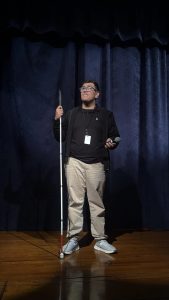 Eighth-grader Wilfredo M., who is visually impaired, will perform a monologue titled “The Gift I Can’t Wrap.”
Eighth-grader Wilfredo M., who is visually impaired, will perform a monologue titled “The Gift I Can’t Wrap.”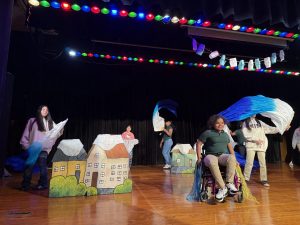 experience all opportunities, explore who they are, and build relationships.”
experience all opportunities, explore who they are, and build relationships.”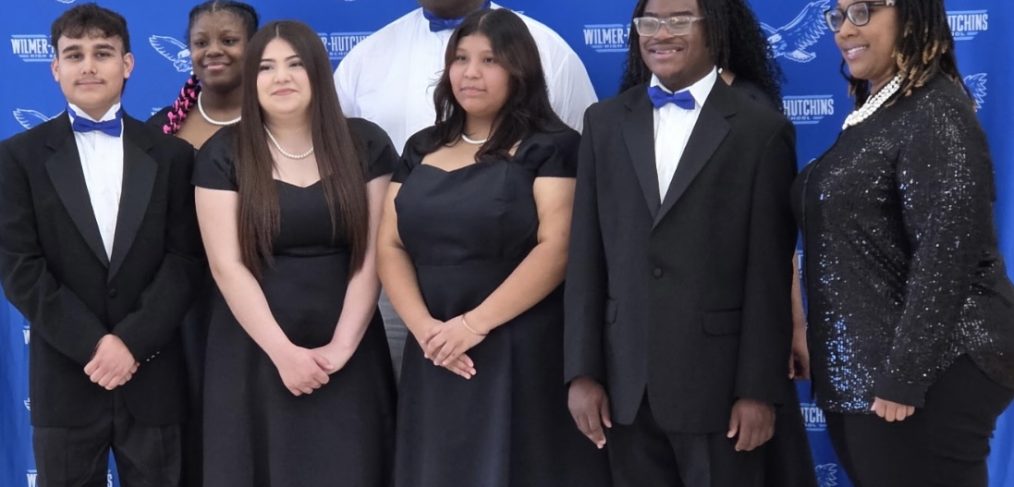
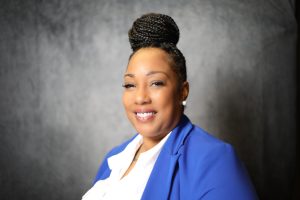 Wilmer Hutchins High School choir teacher Regiss Richards is growing the school’s choral program and shares a lifelong love of music rooted in early memories of hearing her father sing and growing up in Dallas ISD. Now, as an educator, Richards aims to ignite a similar spark in her students, teaching them self-expression, harmony, and confidence through song.
Wilmer Hutchins High School choir teacher Regiss Richards is growing the school’s choral program and shares a lifelong love of music rooted in early memories of hearing her father sing and growing up in Dallas ISD. Now, as an educator, Richards aims to ignite a similar spark in her students, teaching them self-expression, harmony, and confidence through song. 
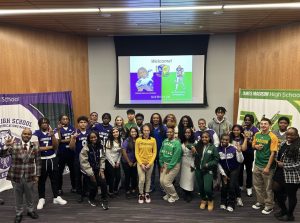
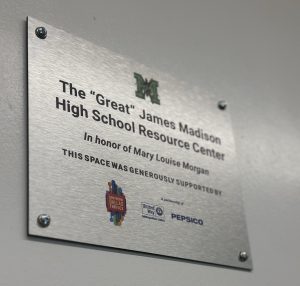
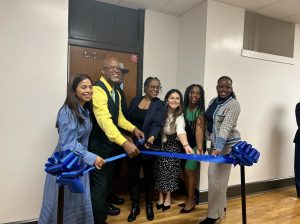

 W. Spence Talented/Gifted Academy for over two decades
W. Spence Talented/Gifted Academy for over two decades Despite receiving hundreds of donations, Sepulveda and Black have faced the stark possibility of insufficient toys. But help arrives just in time, Black said.
Despite receiving hundreds of donations, Sepulveda and Black have faced the stark possibility of insufficient toys. But help arrives just in time, Black said.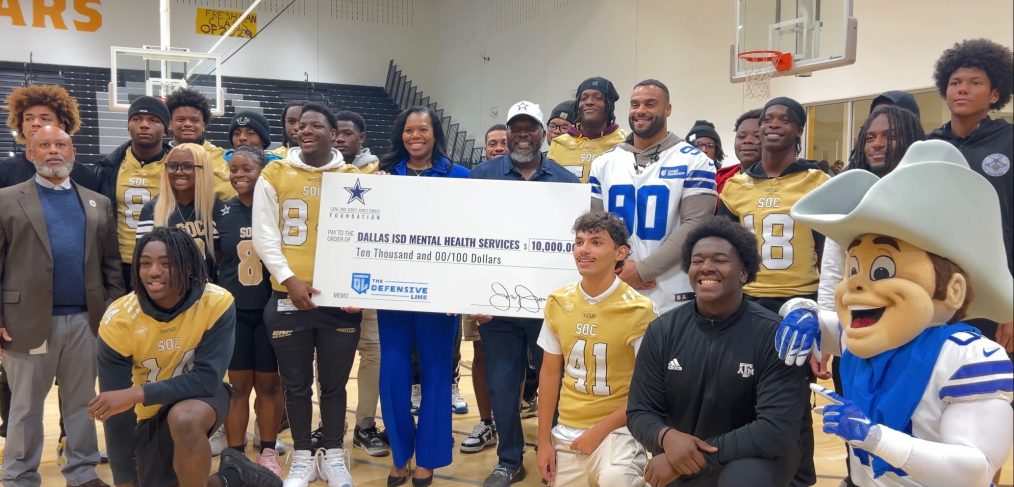

 “It’s a blessing to be honored. I feel appreciated,” said Areal Chandler, cafeteria supervisor at Mark Twain School for the Talented and Gifted. “I get to interact with my students every day. The children are the best part of my day.”
“It’s a blessing to be honored. I feel appreciated,” said Areal Chandler, cafeteria supervisor at Mark Twain School for the Talented and Gifted. “I get to interact with my students every day. The children are the best part of my day.”




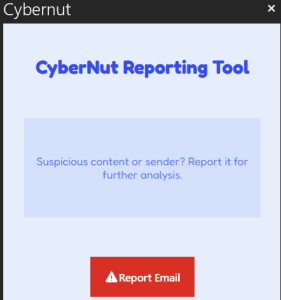 Cybersecurity experts estimate that globally, hundreds of thousands of people fall victim to phishing attacks every year. Phishing is a type of cybercrime where spam messages, generally emails, containing malicious links or files are sent to people to download or click on the link.
Cybersecurity experts estimate that globally, hundreds of thousands of people fall victim to phishing attacks every year. Phishing is a type of cybercrime where spam messages, generally emails, containing malicious links or files are sent to people to download or click on the link. 